Ericsson is on the brink of acquiring Red Bee Media and head of broadcast services Ian Brotherston tells George Bevir why the world can no longer be divided into broadcasters and telcos
When Ericsson revealed its intention to acquire Red Bee Media in July, there weren’t too many people in the industry who were surprised.
The company had been linked with Red Bee last year when it entered the UK facilities sector by snapping up Technicolor’s playout division and speculation linking the two companies continued when Ericsson launched its Broadcasting Services division at NAB earlier this year.
The rumours intensified when, just a month later, former Red Bee commercial director Ian Brotherston was confirmed as Ericsson’s UK head of broadcast services.
Ericsson’s core business is telecoms; the Stockholm-headquartered firm makes equipment for fixed-line and mobile operators, supplying and managing 4G kit for the likes of O2 and Everything Everywhere.
It has been making compression equipment for 20 years, but only in the past four years has it moved into the world of TV playout, after signing a deal to operate Swedish broadcaster TV4’s playout services.
Ericsson described the move as a strategic step for the company as the telecoms, media and internet sectors come together.
Last year, it ramped up its efforts to pull those worlds even closer with the Technicolor deal, which included the company’s playout operations in the UK (in Chiswick and an ITV regional playout facility in Leeds), France and the Netherlands, along with an agreement to buy Microsoft’s Mediaroom IPTV software unit.
Brotherston’s career has taken in a host of firms in the three sectors identified by Ericsson.
A recent story about UK newspaper The Guardian launching a dedicated channel with Dailymotion, where Brotherston was previously chief executive, provides an example of the changing media landscape.
“People are entering TV who weren’t there before and Ericsson is at the vanguard of helping them,” he says.
“These new entrants are not just talking about linear TV, they are increasingly discussing IPTV and content that is consumed on tablets and phones.”
A connected world
The world, as Ericsson sees it, is a connected one, and chief executive Hans Vestberg has proclaimed there will be 50 billion connected devices by 2020.
It’s a figure that is regularly repeated by Ericsson employees, with Brotherston using it to explain why the company has ventured further into the world of broadcast.
“BT Sport’s launch is a clear demonstration that you can no longer divide the world into telcos and broadcasters,” he says.
“The lines are completely blurred. Of an anticipated 50 billion connected devices by 2020, 15 billion will be video-enabled. BT is a good example in the UK, but there is also Verizon in the US. [Singapore’s] Singtel has also announced a move into content.”
Brotherston, who has been with Ericsson for three months when we meet, says he has spent his time meeting customers to find out about their needs and explain Ericsson’s strategy.
“Years ago, outsourcing was seen as ‘mess for less’: once you had a business that was difficult to run, you effectively passed it to an outsource provider who continued to run it - hopefully for less money. It’s completely different now; it’s a proper partnership, and we need to be more flexible with contracts and provide innovation as well. The world has changed.”
One of those changes, Brotherston says, is that clients want to work with service providers who understand their business rather than “slavishly” follow instructions.
“I wasn’t with Technicolor before, but I don’t think that openness has always been there because our message has been so positively received,” he says.
Another change has been to introduce a managed services chief operating officer at the company’s Chiswick Park playout centre, where 2,300 hours of content are played out every day for clients including ITV.
Steve Cray - given the role after working at Ericsson for 14 years - has been tasked with of making sure customers’ interests are represented inside the business.
“Steve brings Ericsson’s background of managing large contracts and the rigour of discipline, process and scale that comes with telecoms, but possibly hadn’t always been there in broadcasting,” says Brotherston.
Scale is a point Brotherston returns to, and it’s illustrated by some key figures: the company has 112,000 employees around the world and last year generated $33.8bn (£21.8bn) in revenue.
It also spends about $4bn (£2.5bn) on R&D, with 1,600 staff dedicated to media.
Expertise and experience were the reasons given by Ericsson for striking a deal with Red Bee owner Macquarie to acquire the former wholly-owned subsidiary of the BBC.
The proposed acquisition is currently being scrutinised by the Office of Fair Trading, with a decision due by mid-September.
Assuming it gets the green light, Ericsson’s broadcast ambitions will have their biggest boost to date.
Ian Brotherston on…
Serving broadcasters
“It’s important to provide services at both ends of the market, and we’re probably better positioned than anyone else in the market to do that.
Things like playout-in-a-box and cloud-based playout are talked about but are still evolving.”
Management
“My style is consensual. If you are surrounded by clever people you have an obligation to listen to them. My style is to use that expertise.”
IP delivery
“Satellite has breadth and massive reach.
Broadband, while increasingly fast in major cities, is more difficult in other parts of the country.
Ericsson is one of the leaders in compression so we can help with that, but it’s a gradual migration. But for 90% of the population, in five years’ time a lot of content will be delivered over IP.
Career
May 2013-present Head of UK broadcast services, Ericsson
May 2010-May 2013 Chief executive, Qype
April 2010-June 2012 Chairman, Premier Mobile Communications Group
Jan 2009-Dec 2009 Chief executive and chairman, Dailymotion
Jan 2007-Jan 2009 Commercial director, Red Bee Media
Feb 2005-Sep 2007 Non-executive director, Anam Mobile
Nov 1999-Mar 2007 Managing partner, Consilium Mar
1997-Nov 1999 Director international development, BT Feb
1992-Mar 1997 Divisional director, AT&T


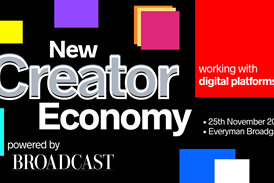
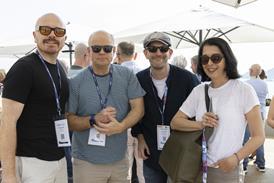
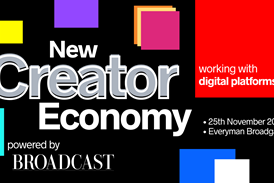



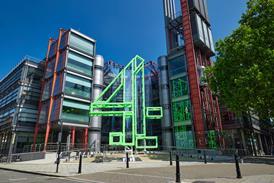





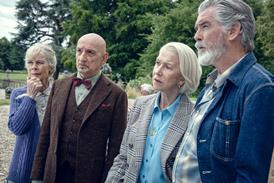











No comments yet